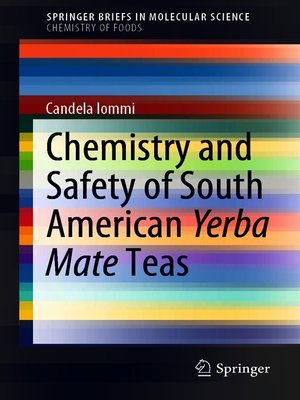Chemistry and Safety of South American Yerba Mate Teas
ebook ∣ SpringerBriefs in Molecular Science
By Candela Iommi

Sign up to save your library
With an OverDrive account, you can save your favorite libraries for at-a-glance information about availability. Find out more about OverDrive accounts.
Find this title in Libby, the library reading app by OverDrive.



Search for a digital library with this title
Title found at these libraries:
| Library Name | Distance |
|---|---|
| Loading... |
This book explores the traditional use of Ilex paraguariensis, a plant that is widely distributed in South America. Thanks to its purported properties, it has been used for centuries in the form of teas with a variety of names, including: 'yerba mate' (Argentina), 'chimarrão' (Brazil), and others.
Ilex paraguariensis and its teas (also referred to as 'mate teas') are well known because of their alleged pharmacological effects in numerous common conditions, including obesity, osteoporosis, constipation, arthritis, and hypertension. These effects are generally ascribed to yerba mate teas because the botanical species contains bioactive and stimulating substances like caffeine (originally dubbed 'mateine'), various alkaloids, and several phenolic acids. Interestingly, the chemical profiles of these teas can fluctuate over time, creating serious production problems. As a result, it is difficult to reliably determine their safety and health effects on humans.
In response to the global interest in these products, this book offers a reference guide to 'yerba mate'/'chimarrão' teas. It analyzes their chemical profiles, discusses their bioactive features, and addresses their safety and health effects. In addition, since the cultural heritage of yerba mate has greatly contributed to its international success, the book also provides information on its historical legacy, regulatory aspects, and the global market.







